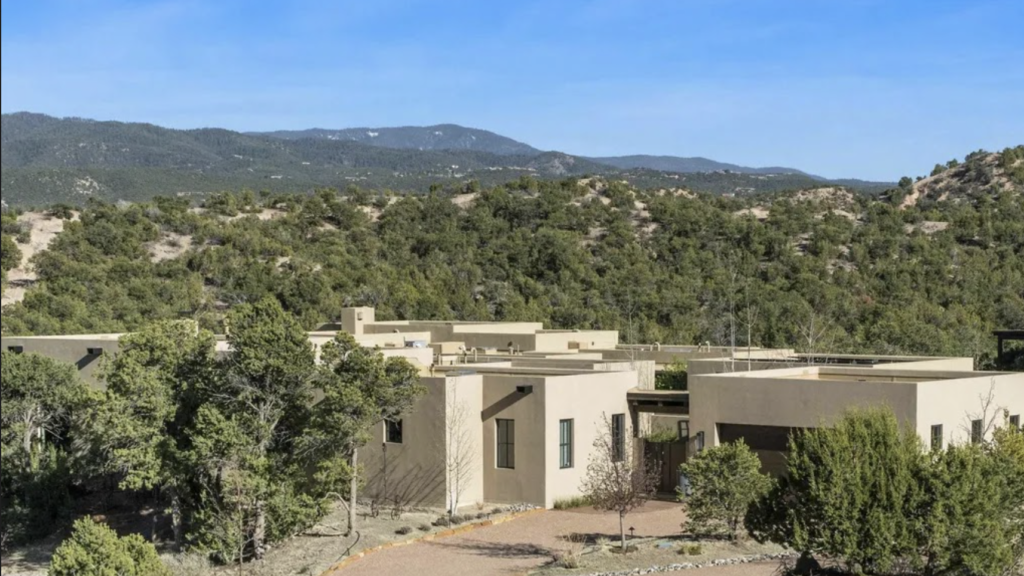In a shifting real estate market, the guidance and expertise that Inman imparts is never more valuable. Whether at our events, or with our daily news coverage and how-to journalism, we’re here to help you build your business, adopt the right tools — and make money. Join us in person in Las Vegas at Connect, and utilize your Select subscription for all the information you need to make the right decisions. When the waters get choppy, trust Inman to help you navigate.
Are you receiving Inman’s Agent Edge? Make sure you’re subscribed here.
There’s no single way to grow a thriving real estate business, but there are some core strategies that most successful agents utilize to find success. The following are seven core strategies to help you build the business of your dreams.
1. Geographical farming
A classic never goes out of style and geographical farming is a core strategy that nearly every successful agent utilizes. Having a defined area or neighborhood where you are known as the expert leads to a consistent flow of listing opportunities. Do you have an area or neighborhood you farm? If so, should you consider adding another area to farm to expand your business?
Finding the ideal farm involves a few steps to make sure the neighborhood presents an opportunity for growth for the agent. The evaluation process begins by identifying whether there is a dominant agent servicing the neighborhood. I usually look for neighborhoods where no single agent has listed more than 20 percent of the total number of homes in the previous 12 months.
We also want to find a neighborhood that has average to high turnover. Ideally, this would be 10 percent or higher as a percentage of the number of homes in the neighborhood. Lastly, we want to make sure the investment of time, energy, and resources in this area or neighborhood will be rewarded.
Farming involves a mix of marketing, and we suggest budgeting $2 per month, per household to accurately estimate your annual costs. The $2 usually includes direct mail, open house marketing, just listed/just sold marketing, and community events.
For this example, let’s use a 500-home subdivision that will have an estimated investment of $1,000 ($2 x 500 homes) per month or $12,000 for the year. By estimating the average sales price times the average gross commission, you have the ability to see what your breakeven number of listings would be. For example, if the average sales price is $500,000 and if the average listing side commission rate is 3 percent, then the gross commission on the average listing taken and sold would be $15,000.
For this example, if the agent split is 75 percent, then the average net commission on the average home in the targeted neighborhood would be $11,250. This means you will need to take two listings in the neighborhood over the coming year to have a profit in the neighborhood. Also, by selling just one listing you would be very near the breakeven point.
Let’s assume this neighborhood has a 10 percent turnover rate each year. So, for a 500-home subdivision, you would estimate that in an average year there would be fifty homes listed and sold. By strategically marketing to the farm in a systematic manner, we estimate you should be able to take at least 10 percent market share and, in many cases, a higher percentage.
Based on the 10 percent market share in this example, that would be five listings. Taking five listings means you could estimate roughly $56,250 in net commissions based on five listings times the average estimate of $11,250 per average listing sold.
Geographical farming should be a part of every successful agent’s business plan.
2. Circle prospecting
Circle prospecting is another traditional strategy that continues to yield results. This form of prospecting derives its name from the traditional practice of drawing a circle on a map around a group of homes with a subject property in the middle.
The subject property in the middle of the circle is identified by an event that has taken or is taking place regarding the home, like a new listing, pending contract, recent sale or upcoming open house.
The owners surrounding the subject property are called to be made aware of the new event. Although there are many ways to execute circle prospecting, the most effective one we’ve found recently is calling around a home where you or a colleague had a buyer who missed out in a multiple-offer negotiation. Here is an example of this script:
Hi [Owner’s name], this is [Agent’s name with agent’s company]. I’m not sure if you’re aware, but the home a few doors down from yours came on the market for sale a few days ago. The seller received multiple offers and is currently under contract to sell.
I was working with one of the potential buyers that made an offer but missed out on being able to purchase the home. Due to missing out on the other home, they may be willing to pay a premium for a home in your neighborhood. Have you heard of any of your neighbors that may consider selling?
Don’t even ask them if they would consider selling. If they are considering it, I promise they will let you know. If they never mention their home as an option, close with this line:
I would be the worst Realtor in the world if I didn’t at least ask, is there a price at which you would consider selling your home?
Yes, you will stumble across people considering selling their home immediately. But circle prospecting is also one of the best ways to build a database of owners that you can add value to and, over time, earn their business.
3. Database growth and consistent communication
A healthy database is a growing database. It should include every single person you do business with, every person you know that is a homeowner, and anyone you know that is considering buying a home in the future.
Growing your database can come by adding people you meet, gaining referrals, or buying online leads. The key is to have a consistent, steady flow of new leads coming into your database.
A database is useless if you don’t consistently communicate and add value to the people you’ve accumulated. Monthly or weekly newsletters, automated email updates with properties meeting the leads’ criteria, and periodic market updates will ensure your database is optimized.
4. Have a separate database for Realtors in feeder markets
Every market has feeder markets where people are moving from and where sellers in your market are moving to. Building a database of agents in these feeder markets provides you the opportunity to provide value to the agents, leading to more referral opportunities.
The value added to these agents can be updates for your market or tips on how to grow their businesses. The key is to educate and entertain. If you consistently communicate and add value to this group of agents, you will see more referrals.
5. Social media marketing
People ultimately do business with people they know, like, and trust. Social media provides the opportunity to share who you are in an authentic manner that draws your ideal client to you. With so many choices in platforms, which one should you focus on?
Start by identifying your ideal client. Once you’ve identified your ideal client, determine which platform they are more likely to be on. That will make your decision easy. Be on the platform where your ideal client spends her time.
Focus on a mix of content including both personal and business. The best way to build relationships and trust on social media is through video. Focus on short-form videos that help your audience connect with you and your personality. Mix business and personal content.
By consistently adding new and fresh content to social media, your ideal clients will find you.
6. CMA a day
Every strategy listed above has mentioned the value of consistency. The CMA a day strategy is no different. By providing at least one homeowner per day an updated idea of their home’s value, you will generate listings.
These CMAs can be printed and mailed or emailed to the homeowners. But the most effective CMAs we’ve found are the video CMAs where you record your screen and review the analysis through the video. These CMAs help you stand out above the crowd because they are personalized, unique, and different from anything most homeowners have ever received.
Doing one CMA a day will significantly help you grow your business.
7. Develop a list of MVPs for your business
Who are your biggest fans? Who are the people that would love to send you a referral? These are the MVPs (Most Valuable People) for your business. Develop a list of people that you know are for you and want to do what they can to help you build the business of your dreams.
Once you have this list compiled, find unique ways to keep you and your business top of mind. This could be periodic calls to see how they are doing or hand-written thank you notes or appreciation gifts. It could also be breakfast or lunch meetings to catch up and say thank you for always supporting you.
The key is to keep in touch and let them know how much you appreciate their support. When you focus on deepening these relationships, they will in turn help you grow your business-wide.
The process of growing a thriving real estate business is systematic when the proper strategies are matched with consistent execution. Identify the ideal strategies for you, go all in executing those strategies, and the success you’ve been searching for is inevitable.
Jimmy Burgess is the CEO for Berkshire Hathaway HomeServices Beach Properties of Florida in northwest Florida. You can connect with him on Instagram or YouTube.



 Are You Interested in West Eleventh Residences Miami?
Are You Interested in West Eleventh Residences Miami? Are You Interested in ONE Park Tower by Turnberry?
Are You Interested in ONE Park Tower by Turnberry? Are You Interested in Diesel Wynwood Condominium?
Are You Interested in Diesel Wynwood Condominium? Are You Interested in Five Park Miami Beach?
Are You Interested in Five Park Miami Beach? Are You Interested in Cipriani Residences Miami?
Are You Interested in Cipriani Residences Miami? Are You Interested in Bentley Residences Miami?
Are You Interested in Bentley Residences Miami? Are You Interested in Baccarat Residences Brickell?
Are You Interested in Baccarat Residences Brickell? Are You Interested in Aria Reserve Miami?
Are You Interested in Aria Reserve Miami? Are You Interested in 888 Brickell Dolce & Gabbana | Miami?
Are You Interested in 888 Brickell Dolce & Gabbana | Miami? Are You Interested in 600 Miami WorldCenter?
Are You Interested in 600 Miami WorldCenter? Are You Interested in HUB MIAMI RESIDENCES?
Are You Interested in HUB MIAMI RESIDENCES? Are You Interested in WALDORF ASTORIA RESIDENCES?
Are You Interested in WALDORF ASTORIA RESIDENCES?